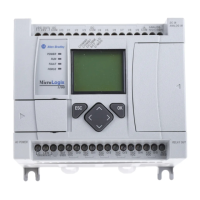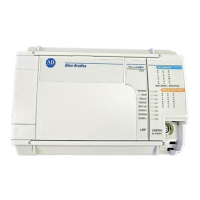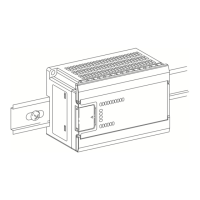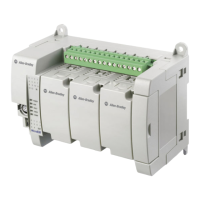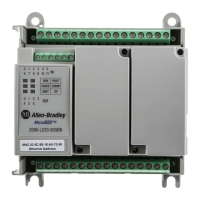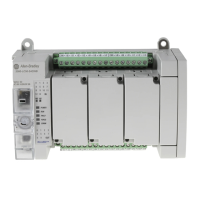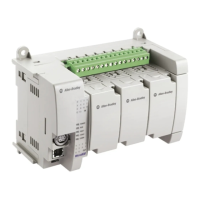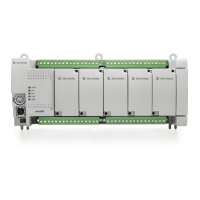Publication 1766-RM001A-EN-P - October 2008
480 Socket Interface Using CIP Generic Messaging
You can partition the 8 available socket instances between UDP and TCP
sockets by:
• Using all 8 instances for client TCP connections.
• Using all 8 instances to listen for incoming TCP connections and
then accept 8 connections from other device.
• Performing both TCP client and server operations.
• Performing both TCP and UDP operations.
When you use the socket instance as a TCP server type, you don't need to
make a listen socket. Even if you would like to listen for incoming TCP
connections to the same port, you should create a new socket instance.
No listen socket instance is supported.
Once you open a connection on a client socket instance, you cannot use
the same socket instance to accept incoming connections. Similarly, if you
accept connections on a socket instance, you cannot then use the instance
to open outgoing connections. This behavior is consistent with standard
socket API behavior.
Typical Sequence of Transactions For a TCP Client
The following diagram shows a typical sequence of socket interface
transactions with the MicroLogix controller acting as a TCP client.
Here, the MicroLogix controller sends data to a device and then the
device sends a response. This is a typical sequence of transactions.
Depending on the application protocol, the device could initiate sending
data to the MicroLogix controller once the connection is open.
Available Socket Services
Socket Service Socket Instance
CreateSocket Server or Client
OpenConnection Client
AcceptConnection Server
Read Server or Client
Write Server or Client
DeleteSocket Server or Client
DeleteAllSockets Server or Client
efesotomasyon.com - Allen Bradley,Rockwell,plc,servo,drive
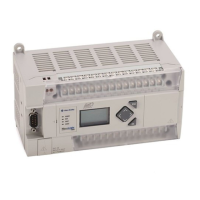
